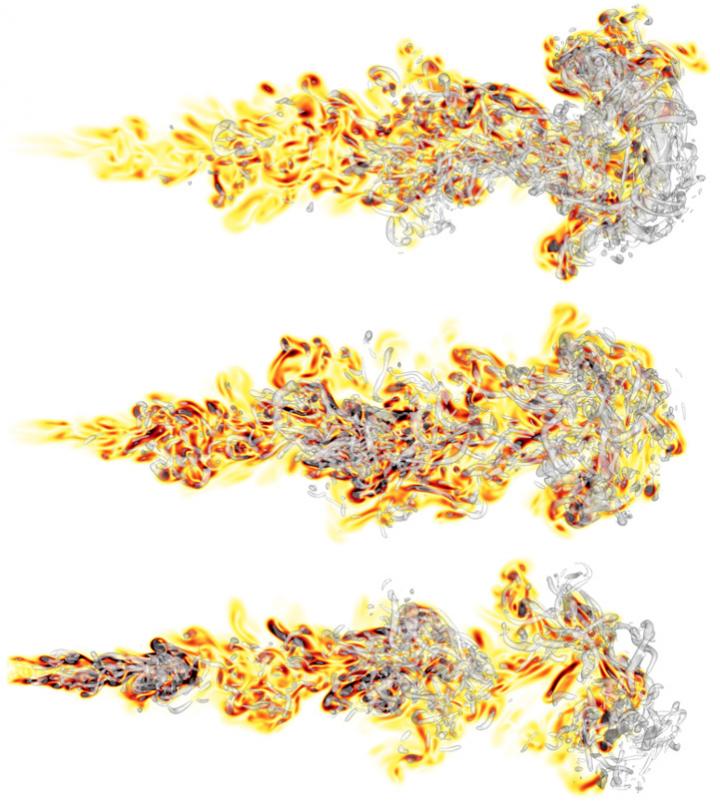HEALTH
Michigan team's predictive modeling provides a more accurate picture of how coughs disperse viruses
Scientists don't fully understand exactly how our coughs disperse virus particles into the air, but a new project led by the University of Michigan aims to provide a more accurate assessment of the dangers of close-proximity coughs and potentially lead to better barriers that can mitigate the hazards.
Previous research typically treats coughing as a single burst of air from the lungs, but that's not really how coughs work. More often, they're two or more pulses that expel droplets outward, creating swirling, turbulent airflows.
In the age of COVID-19, it's more important than ever that we understand those "multi-pulse" coughing events. They are getting a closer look from researchers at U-M and Auburn University. In addition to potential ramifications for COVID-19, it also could inform future scenarios where pathogen transmission between humans presents a major health risk.
"There are a lot of key open questions in this space," said Jesse Capecelatro, U-M assistant professor of mechanical engineering. "There is evidence to suggest particles originating deeper within the lung carry more virus, and we want to know how those particles get dispersed during a cough.
"Do multiple pulses give rise to multiple vortex rings as the virus-laden air is expelled? And if so, what effect does that have on how the virus particles travel through space? Those are key things to know if you're trying to understand transmission and how to protect against it." 
Using custom cough simulators connected to mannequins, as well as lasers and human subjects, researchers at Auburn University will make physical measurements of the airflow and expelled particles during simulated coughing. The mannequins will be outfitted with face masks and face shields. They'll use laser sheet imaging to allow for tracking of all particles expelled during coughing as they pass through a laser plane. This process will enable them to quantify not only the number of particles but also to track where they go, how they move with the airflow, and how fast they travel.
With that data from the high-resolution simulations and physical experiments in hand, Capecelatro and his U-M team will utilize high-performance supercomputing to generate improved predictive modeling, which will provide a more accurate picture of exactly how coughs disperse viruses.
U-M and Auburn researchers see the work as basic science that has the potential to shape how governments and communities respond to future outbreaks.
"The methods developed will be used to study how droplet-laden coughs interact with barriers such as face masks and face shields. And we'll evaluate how effective they are at blocking these flows and containing outbreaks," said Vrishank Raghav, assistant professor of aerospace engineering at Auburn.
"The new knowledge will also lead to the development of improved tools that can rapidly assess the risk of spreading infectious disease and assist in the development of public policy, such as physical distancing guidelines or indoor occupancy limits."
Yuan Yao and Kalvin Monroe, members of the Capecelatro Research Group, are contributors to the project. Capecelatro's fluid dynamics work has been in high demand this year due to the COVID-19 pandemic. He has studied particle flows on U-M buses, in hospital rooms, and in dental clinics. That work has contributed to changes in practice and policy designed to keep people safe.
For this project, the National Science Foundation has awarded the two institutions $465,000 over the next three years.
